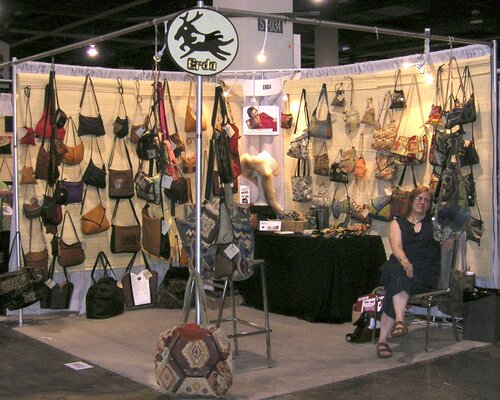by Carolyn Edlund
What’s the potential for creative entrepreneurs looking for an exit strategy? Here are some options for artists.

When you think about selling a business, you don’t usually think about artists. That’s because the typical artist who creates original works of art cannot simply be replaced with another business owner. They are known by name, their work is distinct and recognizable, and the art is personal.
When an artist reaches the point where they want to retire or close their business and move on to something else, there are a few options. This mainly depends on the business model they are using. It may be that all the artist can do is to sell their inventory, materials and equipment, or perhaps an owned studio space. Then the business would close.
Other artists have a body of work which can continue to be sold as reproductions. They may enter into a licensing (with an art publisher for example). Their artwork continues to sell, and the contractual arrangement provides a passive stream of income in the form of royalties for the artist.
However, there is a business model which has more potential to be sold to a new owner. That is the production studio, which typically has a set line of merchandise which is created in-house. The artist designs a collection, which is then reproduced in the studio by themselves and/or staff. Items made in production may be wholesaled to retail buyers. Or, they may be sold outright at retail shows and fairs, or online.
When selling a production studio business, equipment, patterns, molds, or processes can be conveyed to a new owner. The new management will often continue under the same brand name. Craft artists frequently have this type of business setup. It can give them the flexibility and opportunity to sell their businesses profitably.
How one artist sold her business
Patti Dowse, the owner of Erda, a small business producing handmade leather and textile handbags and accessories, is an example of an entrepreneur who successfully sold her business. We recently spoke about her experience putting her small business up for sale, finding a buyer and completing the transaction.
After being in business for 42 years, Erda had an account base of 1,200 active gallery customers, a large inventory, and twelve employees. It was located in its own 10,000 square-foot building. This made for an attractive package deal for someone who wanted to step into a working business.
Dowse explained, “If you’re hoping to sell your business, it’s imperative to prepare it ahead to be appealing, much the way you’d stage a house to be sold. Put away your knickknacks, clean up your messes (financial statements), and make it easy for someone else to imagine living there.”

Booth filled with Erda merchandise
She was able to find a business broker willing to take on the sale, although even for them this was a small business. The broker prepared an amazing offering brochure, after conducting interviews and collecting numerous forms and questionnaires. Erda supplied images of their products and tradeshow displays.
It took a few months, but the broker did produce a buyer who was interested in owning the business. Dowse settled for a price that was not much higher than the value of Erda’s inventory, machinery, and account list. But it was enough to have the business continue and the employees retain their positions.
“Once the business is sold, what happens afterwards is not something you have control over, because it belongs to the new owner,” she says. Anything not on paper isn’t guaranteed, so she recommends that if something is very important to you, it be included in the sales agreement!




Speak Your Mind